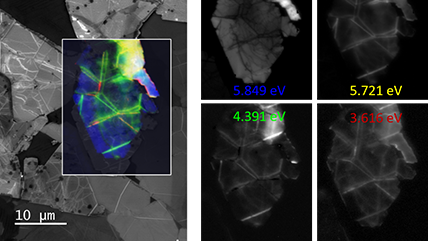Oxides, nitrides, and other ceramics are typically wide band gap materials regarded as insulators. These materials, like sapphire (Al2O3) and gallium oxide (Ga2O3), contain various point and structural defects and impurities. These defects and impurities provide a mechanism for the production of cathodoluminescence as free carriers generated by the electron beam recombine via the energy states inserted into the crystal's forbidden band gap. By characterizing the radiative recombination of electron beam excited electron-hole pairs, cathodoluminescence can reveal the presence and type of defects or impurities present and the material phase.
 |
Spectroscopic analysis of ultra-wide bandgap semiconductors |